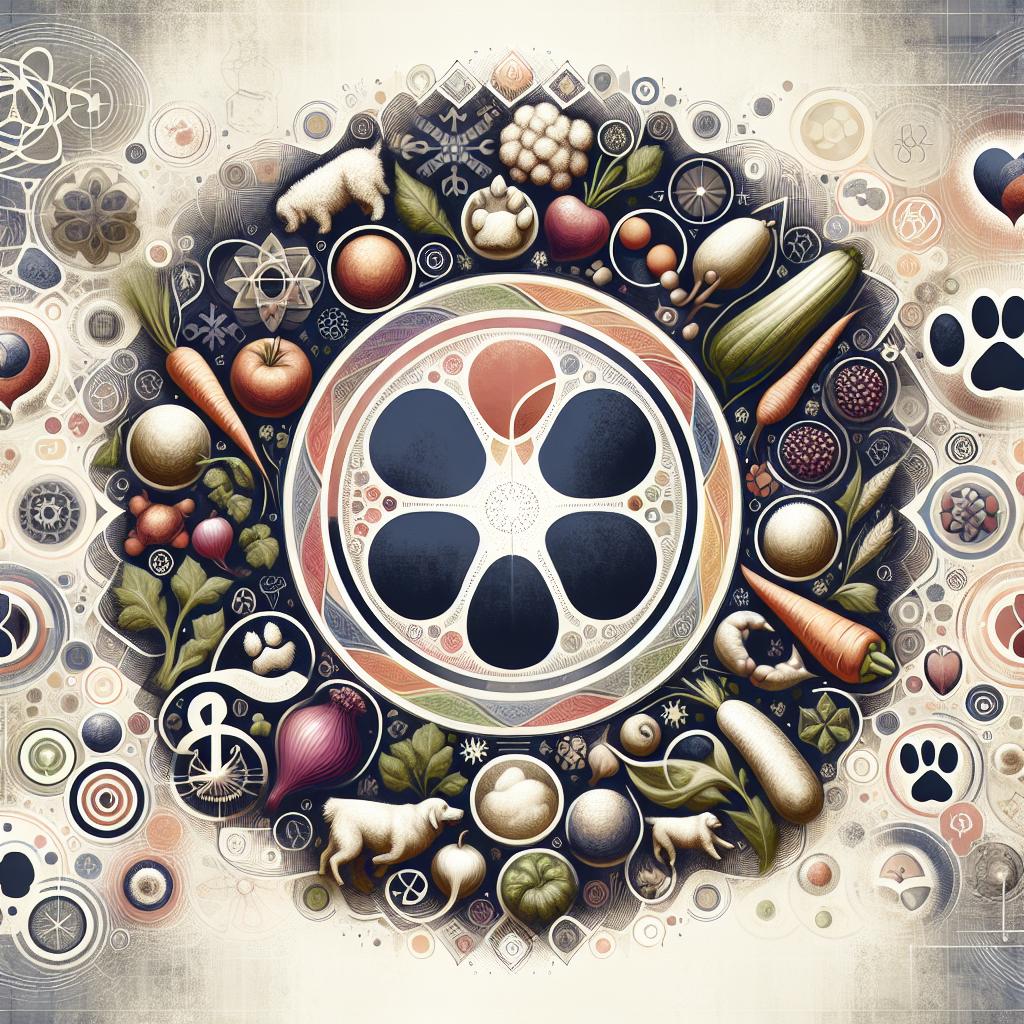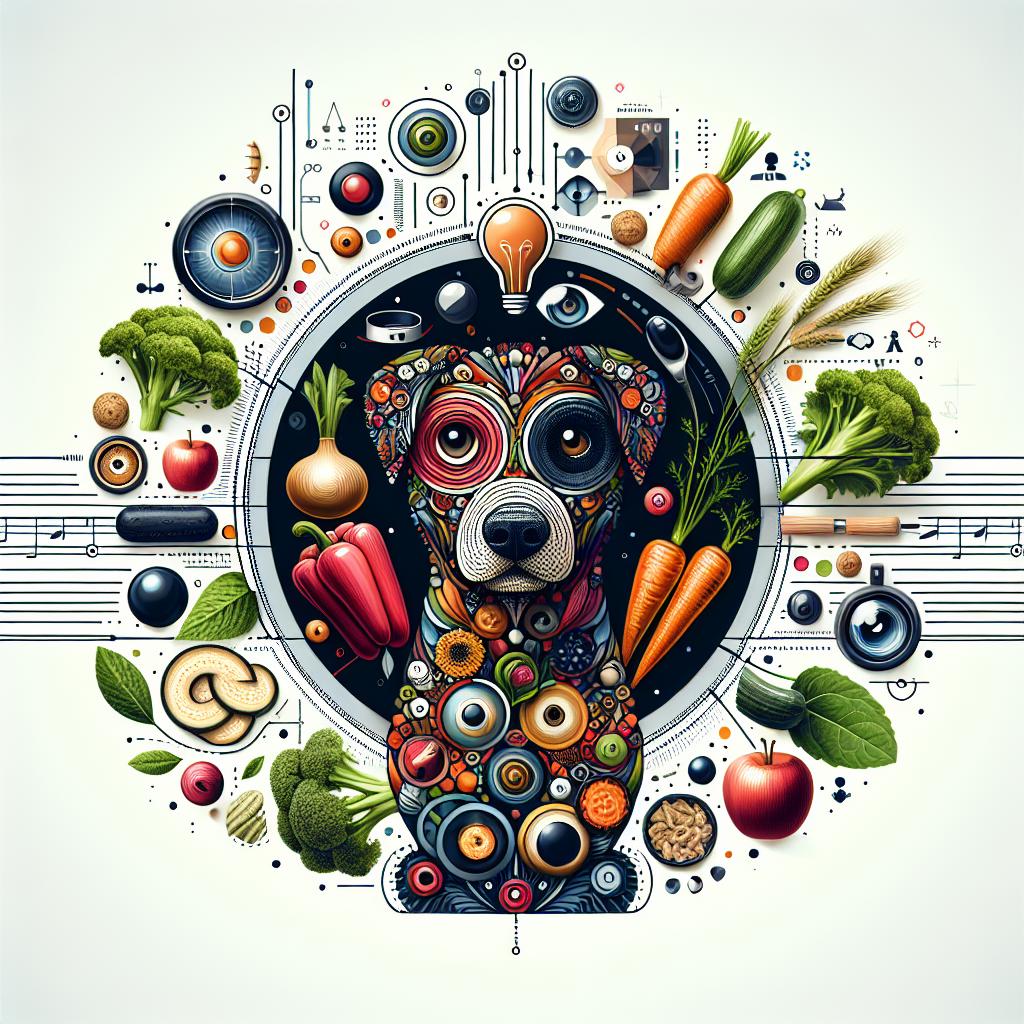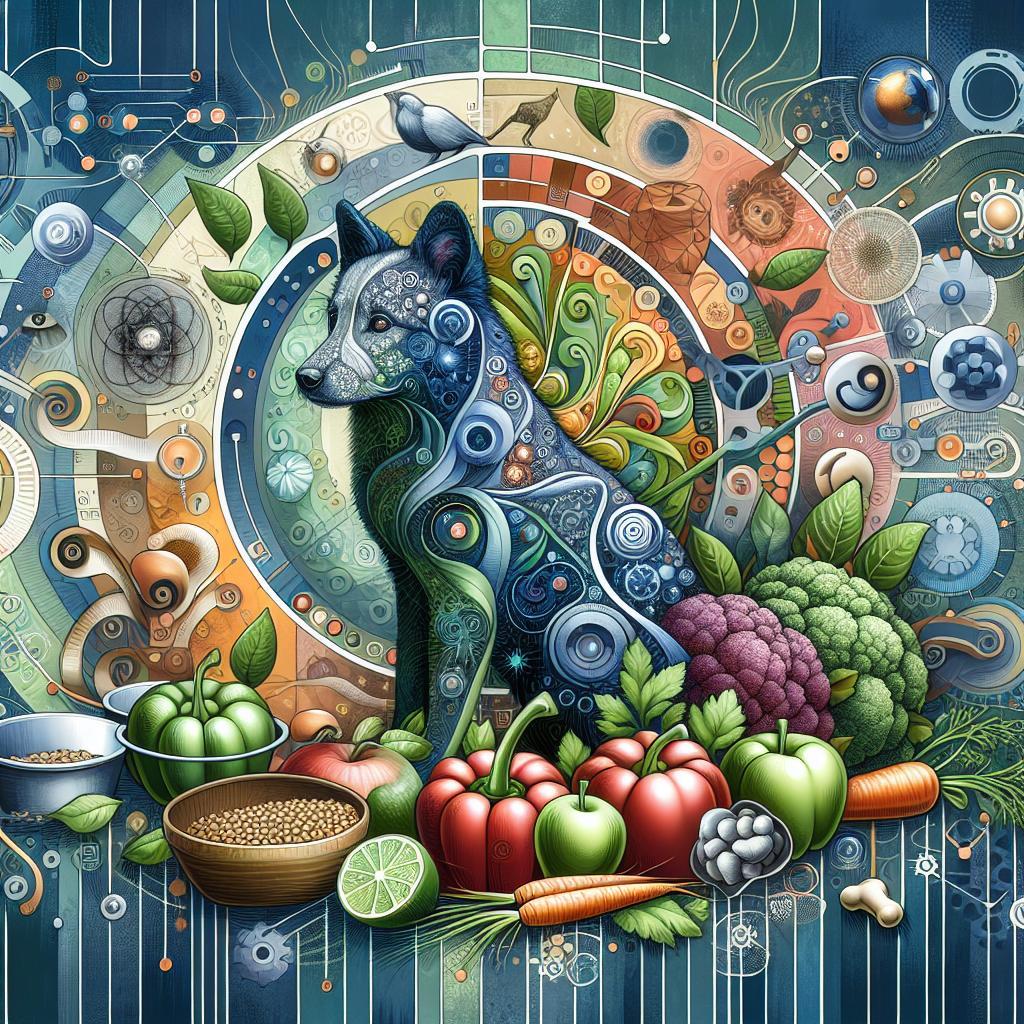As our furry companions wag their tails and gaze up at us with unconditional love, it’s hard not to want the very best for them—especially when it comes to their diet. While dog food has long been the go-to choice for pet parents, an increasing number of dog owners are discovering the nutritional benefits of incorporating fresh vegetables into their dogs’ meals. But which vegetables are the most beneficial? In this article, we will explore some of the best veggies you can add to your dog’s diet, providing valuable insights into how these colorful, nutrient-rich foods can enhance their overall health and well-being. From crunchy carrots to leafy greens, join us as we delve into the vibrant world of canine nutrition and uncover the best vegetable choices to keep your pup happy and healthy.
Nutritional Powerhouses: Understanding the Benefits of Vegetables for Dogs
Incorporating a variety of vegetables into your dog’s diet serves as a fantastic way to enhance their nutrition. Vegetables are not only low in calories but also packed with essential vitamins and minerals that can boost your dog’s health. For instance, carrots are rich in beta-carotene, which is great for vision and skin health. Moreover, leafy greens like spinach and kale can provide important antioxidants, aiding in overall immune function. Other beneficial options include:
- Green beans: Low in calories, high in fiber.
- Pumpkin: Excellent for digestion and a good source of vitamins A and C.
- Sweet potatoes: Loaded with fiber and a natural source of energy.
- Broccoli: Contains cancer-fighting properties while being a source of essential minerals.
When introducing new vegetables to your dog’s diet, it’s crucial to prepare them correctly to maximize their benefits. Steaming or lightly cooking vegetables can make them easier to digest, while avoiding harmful seasonings is essential. Here’s a simple comparison of nutrient contents among popular dog-friendly vegetables:
| Vegetable | Calories (per 100g) | Key Nutrients |
|---|---|---|
| Carrots | 41 | Beta-carotene, Vitamin K1 |
| Spinach | 23 | Vitamins A, C, K, Iron |
| Sweet Potatoes | 86 | Vitamin A, Fiber |
| Green Beans | 31 | Fiber, Vitamin C |
Top Veggies for a Healthy Pup: Essential Choices for Canine Nutrition
Incorporating vegetables into your dog’s diet can enhance their overall health and happiness. Not only do veggies provide essential vitamins and minerals, but they also offer valuable dietary fiber that aids in digestion. Here are some superb options to consider:
- Carrots: Crunchy and sweet, carrots are packed with beta-carotene and promote eye health.
- Green Beans: Low in calories and rich in fiber, green beans make for a satisfying snack.
- Sweet Potatoes: A nutrient-dense starch, sweet potatoes are great for energy and are high in vitamins A and C.
- Spinach: Loaded with antioxidants, spinach contributes to a strong immune system.
- Broccoli: This cruciferous vegetable is filled with vitamins K and C while also providing anti-inflammatory benefits.
When adding vegetables to your pup’s meals, be mindful of preparation methods to retain their nutritional values. Steaming or boiling can enhance digestibility. Here’s a quick look at a few veggies and how they can benefit your dog:
| Vegetable | Benefits | Serving Suggestion |
|---|---|---|
| Carrots | Supports vision | Raw or steamed, cut into bite-sized pieces |
| Green Beans | Weight management | Steamed with no seasoning |
| Sweet Potatoes | Energy boost | Baked or mashed, no skin |
| Spinach | Immune support | Steamed, served in small quantities |
| Broccoli | Anti-inflammatory | Raw in moderation, or lightly steamed |

Preparing Vegetables for Maximum Digestibility: Tips for Dog Owners
Preparing vegetables for your dog’s meal can significantly enhance their digestibility, ensuring they receive all the nutritional benefits. Start with steaming or boiling certain vegetables, as these methods help break down fibrous cell walls, making nutrients more accessible. Additionally, consider chopping or blending raw veggies, which can further aid in digestion. Always remember to remove any seasonings, as many can be harmful to dogs. Simple cooking techniques and preparation can transform a tough vegetable into a soft, palatable treat for your furry friend.
When selecting vegetables, opt for those that are known to be easily digestible. Some of the best options include:
- Carrots – Rich in beta-carotene and can be served raw or cooked.
- Sweet Potatoes – Packed with vitamins, these are best when boiled or mashed.
- Green Beans – Great for weight management and can be steamed.
- Spinach – Offers iron and other nutrients; lightly steaming is ideal.
- Peas – Easy to digest when cooked, providing protein and fiber.
Here’s a quick reference table for vegetable preparation methods:
| Vegetable | Preparation Method | Digestibility |
|---|---|---|
| Carrots | Raw or Steamed | High |
| Sweet Potatoes | Boiled or Mashed | Very High |
| Green Beans | Steamed | Moderate |
| Spinach | Lightly Steamed | High |
| Peas | Cooked | High |

Incorporating Veggies into Your Dogs Meals: Creative Recipes and Serving Ideas
Incorporating vegetables into your dog’s meals can elevate their diet and provide essential nutrients. Here are some vibrant options that can easily be added to your furry friend’s daily menu:
- Carrots: Crunchy and sweet, they are perfect for snacking or can be boiled and mixed into meals.
- Green Beans: Low in calories and high in fiber, these can be steamed and chopped for easy serving.
- Spinach: A powerhouse of vitamins, a handful can be blended into their food for a nutrient boost.
- Sweet Potatoes: Packed with beta-carotene, they can be mashed or cubed into their food for natural sweetness.
- Peas: These little pods are not just cute but also rich in protein and can be added directly to kibble.
To give you a better idea of how to incorporate these veggies, here’s a simple chart highlighting preparation ideas:
| Vegetable | Preparation Method | Serving Suggestion |
|---|---|---|
| Carrots | Raw or Cooked | Grated in food |
| Green Beans | Steamed | Chopped |
| Spinach | Blended | Mixed into wet food |
| Sweet Potatoes | Baked | Mashed |
| Peas | Cooked | Directly in kibble |
Q&A
Q&A: The Best Vegetables to Include in Your Dog’s Diet
Q: Why should I consider adding vegetables to my dog’s diet?
A: Just like humans, dogs can benefit from a balanced diet that includes a variety of food groups. Vegetables provide essential nutrients, fiber, and antioxidants that can promote overall health, support digestion, and even help maintain a healthy weight.
Q: Which vegetables are safe for dogs to eat?
A: Several vegetables are safe and nutritious for dogs! Some of the best options include carrots, green beans, sweet potatoes, peas, and pumpkin. These veggies are rich in vitamins and minerals that can boost your dog’s immune system and energy levels.
Q: Are there any vegetables I should avoid?
A: Yes, some vegetables can be harmful to dogs. Avoid onions, garlic, leeks, and chives, as they can cause gastrointestinal issues and even lead to more severe health problems. Additionally, some dogs may be sensitive to certain veggies like corn or mushrooms, so it’s wise to monitor their reactions.
Q: How should I prepare vegetables for my dog?
A: Cooking vegetables can enhance their digestibility and nutrient absorption; steaming or boiling is usually a good approach. Make sure to chop them into manageable pieces to prevent choking. Avoid seasoning with salt or spices, as dogs don’t need added flavorings in their food.
Q: Can I feed my dog raw vegetables?
A: Many dogs can enjoy raw vegetables as part of their diet, especially crunchy options like carrots and cucumber. However, be cautious with dogs that have sensitive stomachs, as raw foods can sometimes lead to digestive upset. It’s always best to introduce new foods gradually.
Q: How much vegetable should I include in my dog’s diet?
A: Vegetables should make up about 10-20% of your dog’s overall diet, depending on their nutritional needs and overall caloric intake. It’s important to balance their diet properly, so consult your veterinarian for personalized recommendations.
Q: Can vegetables help with my dog’s weight management?
A: Absolutely! Low-calorie vegetables like green beans and zucchini can be excellent snacks for dogs that need to lose or maintain weight. They fill up your dog’s belly without adding too many calories, making them perfect for healthy snacking.
Q: What’s the best way to introduce new vegetables to my dog?
A: Start with small quantities to see how your dog reacts. You can mix chopped veggies into their regular food as a tasty surprise or use them as training treats. Always observe their behavior and digestive response to ensure they’re happy and healthy!
Q: Should I consult my vet before changing my dog’s diet?
A: Yes, it’s always a great idea to chat with your veterinarian when modifying your dog’s diet. They can provide valuable insights and help ensure that you’re meeting all of your dog’s nutritional needs, especially if they have specific health concerns.
With the right balance of vegetables in your dog’s diet, you can enhance their well-being, making mealtime both nutritious and enjoyable!
Final Thoughts
incorporating the right vegetables into your dog’s diet can provide a wealth of benefits that go beyond mere nutrition. These colorful additions not only enhance your furry friend’s meals but also contribute to their overall health and well-being. Whether it’s the crunchy delight of carrots, the rich antioxidants found in spinach, or the fiber-packed goodness of pumpkin, each vegetable brings its own unique advantages to the table.
As you embark on this journey of expanding your dog’s culinary experience, remember to introduce new foods gradually and consult with your veterinarian to ensure that each vegetable aligns harmoniously with your pet’s individual dietary needs. In doing so, you can transform mealtime into a delightful and healthful adventure, paving the way for a happier, healthier canine companion. So, gather those fresh veggies, mix in a touch of creativity, and watch your dog thrive with every nourishing bite!

